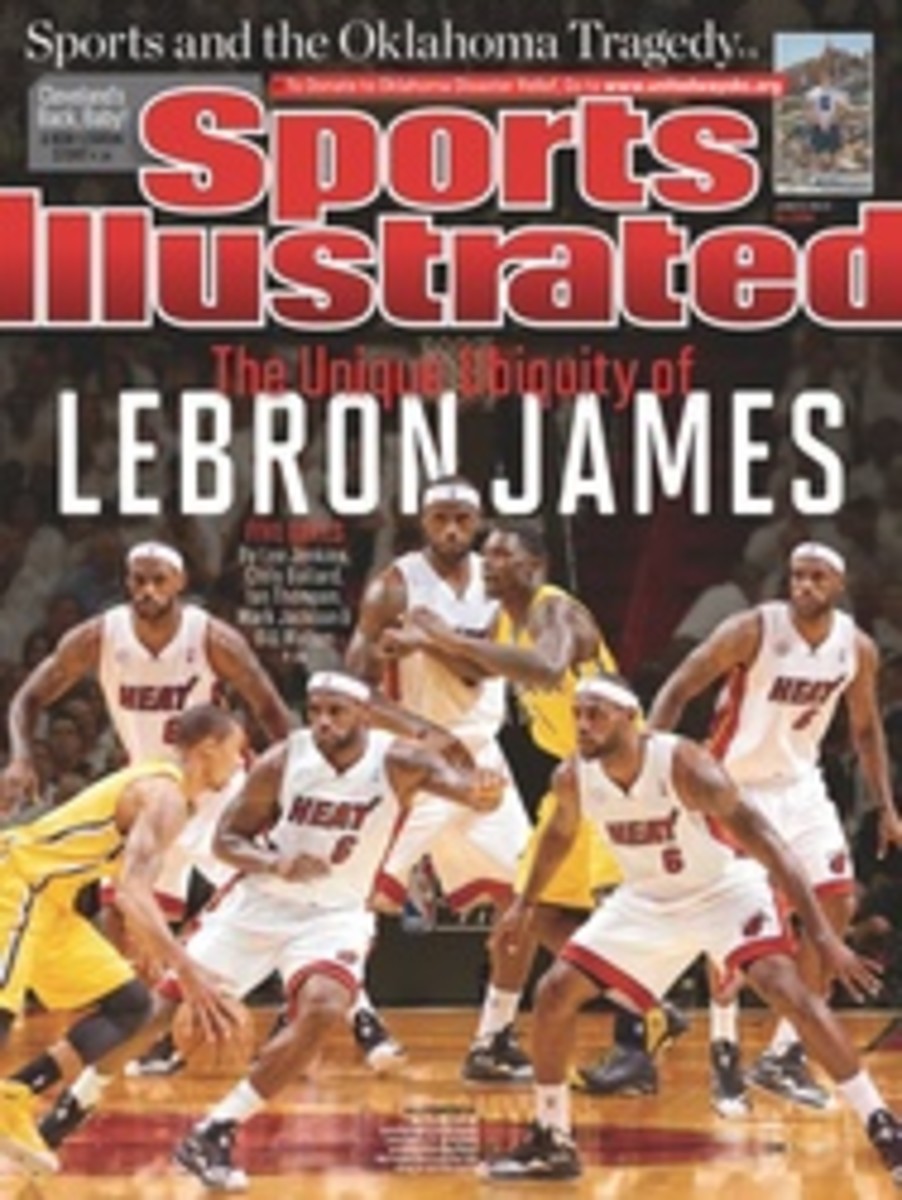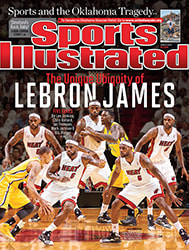
Can't a Man Make a Living?
Tim Clark has that rarest of conditions: an amusing disability. To start with, it's funny that he can't remember what it's called, even though it was first diagnosed when he was a grade-schooler in his native South Africa. "I know there's a name for it," he says. "You could look it up. Essentially what I have is zero supination in my forearms." So you look it up, and suddenly you're reading cadaver studies on "radial and ulnar deviation of the wrist" and learning more than you ever wanted to know about "intrinsic intercarpal ligaments" and "the triangular fibrocartilage complex." You can't help but chuckle.
Funnier still are the stories Clark's mates tell about his adventures at tollbooths and fast-food drive-throughs, and how he's useless at moving furniture. "It's always funny when you're standing with Tim in a food line," says 2008 Masters champ Trevor Immelman, who has witnessed his countryman's struggles to hold a plate with one hand while wielding salad tongs with the other. Want to share some M&M's with the world's 46th-ranked golfer? Pour them into a bowl.
"Silly little things are difficult for me," Clark says. "Like carrying plates. I could not be a waiter." To clarify his condition, he asks you to extend your arms with your palms facing. "Now turn your palms to the sky," he says, confident that you'll have no problem doing so. "If you think of holding a bowl of soup, that's supinating"—Clark, known for his dry wit, misses the pun—"but I can only go to here." He tilts his hands slightly outward to demonstrate the relative immobility of his forearms.
Normally we wouldn't dwell on a golfer's infirmity, but Clark's funky forearms could soon be the talk of the golf world. At 37 he is a dark-horse pick to win the U.S. Open next month at Merion, a course well suited to his anachronistic skills. But even if Clark's popgun game fails to beat Tiger Woods and the other long knockers, the unassuming 5'7" pro who calls Scottsdale, Ariz., home could find himself at the center of the biggest golf-against-golfer disability battle since PGA Tour Inc. v. Casey Martin.
The catalyst for this development is a rules change finalized last week by the USGA and the R&A, a revision popularly known as the anchored-putting ban. As of Jan. 1, 2016, Rule 14-1b will prohibit the long- and belly-putter techniques employed by four of the last six major-championship winners, including defending U.S. Open champ Webb Simpson. It will also, Clark asserts, jeopardize his career because he—unlike Adam Scott, Ernie Els or Keegan Bradley—can't simply dust off an old putter and "go short." "I can't grip the club properly if it's close to my body," Clark says, "because I don't have the means to tuck my elbows in." (Full swings are no problem because on those shots he extends his arms, palms facing each other.)
Clark had just deplaned in Texas when he got word of the USGA's decision. "By no means is it a done deal," he insisted after a long pro-am round at Fort Worth's Colonial Country Club, site of the Crowne Plaza Invitational, where he tied for seventh. "The Tour still needs to decide if it accepts the new rule," says Clark, who expects that it will ultimately be put to a vote of the players. If democracy doesn't save him, he concedes, he might have to consider a disability claim. "It's been no secret," he says, "that we've had legal counsel assisting us through all this."
It was at a players' meeting in January that Clark became the anchorers' champion. He talked for 10 minutes, challenging the arguments against anchoring, detailing his unique circumstances and speaking up for the right of tour pros to regulate their own competitions. He was not the only pro to speak against the proposed rule, but many players credit Clark for commissioner Tim Finchem's subsequent statement that the PGA Tour would join the PGA of America in opposition.
"We were all for him," says Robert Allenby. "Tim's used a long putter since he was a kid, so it's definitely a career-changing move for him." Robert Garrigus, who like Allenby uses a conventional-length putter, adds, "I'm fully on Tim Clark's side and the side of all the guys who use anchored putters. It's our livelihood, not the USGA's."
Clark appreciates the support, but he recognizes that the players are not unanimous in their opposition to 14-1b. Woods, for one, has stated that a motion with a belly or long putter doesn't constitute a stroke. Asked if he's genuinely concerned that the new rule will end his career, Clark nods vigorously. "Oh, 100 percent. It's not a nice feeling coming out here every week knowing there are people trying to take my livelihood away."
That said, he's not looking for the kind of attention that Martin got a decade ago when the Supreme Court upheld the disabled tour pro's right to use a cart. "I don't want to be portrayed as too much of a victim," Clark says. "I'm still playing out here; I'm still trying to win."
The fact that he is one of the Tour's quiet men has enhanced Clark's credibility on the issue. Amiable and self-effacing, he drinks red wine, enjoys a game of darts and warbles to Australian rock bands such as INXS and Midnight Oil. "I think a lot of guys sympathize with Tim because he's such a nice guy," says Immelman. "We've known each other since we were kids, and he's always been like that."
It helps that Clark plays a brand of golf that is more inspiring than awe-inspiring. Born in Durban, he took up the game as a toddler and became proficient before he was aware that his arms were dodgy. He played at North Carolina State and earned his first Masters invitation by virtue of his victory at the 1997 U.S. Amateur Public Links Championship. Since turning pro the following year, he has won 14 times on four continents, played on three Presidents Cup teams and needs only a high finish in the Open Championship to complete the Missed It by That Much Slam, having finished second in the Masters (2006), tied for third at the U.S. Open ('05) and third at the PGA ('03). He has done all this despite never finishing better than 140th in the Tour's driving-distance ranking and with the additional burden of his disability, which makes conventional chipping and pitch shots problematic.
"Tim plays to his strengths," says Tour veteran Stuart Appleby. "He's unbelievably accurate with a lot of clubs that very few people can hit. He's got that I'm-going-to-beat-you look about his game."
Like most Clark fans, Appleby was blown away when the man known as Penguin shot a final-round 67 to win the 2010 Players Championship. Clark even impressed himself, overcoming career-worst nerves to hit the island-green 17th in the final round ("Just teeing the ball up is hard in that situation," he says) and then nailing his drive on the watery 18th. "That was probably the best tee shot I've ever hit," he says. "I'm a guy who averages 270, and I think I hit that thing 310 yards down the left side."
An elbow injury sidelined Clark for the last 7½ months of 2011, but he has shown flashes of his old form this year, finishing second at the Sony Open and 11th at the Masters before the near miss at Colonial. That makes him someone to watch at Merion, a traditional parkland design with narrow fairways, deep rough and a history of rewarding shotmakers. "A lot of courses are long but wide open," he explains. "That only favors the longer hitter." But when a tight, fast setup forces the big boys to hit five-woods or irons off the tee, Clark sticks with his driver, confident of finding the fairway. "That gives me an advantage because I'm hitting shorter clubs to the green," he says. "If I'm out in front of you in the fairway, I like my chances."
If Merion's greens get too firm to hold approaches, Clark will have to cope with his suddenly not-so-funny disability. "Pitching is extremely hard because I have a hard time opening the clubface without opening my whole body," he says. "Luckily for me, you don't have to get that close to the ball for bunker shots and shots outside 30 or 40 yards. It's more like a full shot, so that's always been a strength of mine."
At Merion, of course, he'll be putting with a broomstick held to his chest, reminding us of his endangered status and causing his blue-blazered USGA hosts to squirm.
"They say it's not in the tradition of the game," Clark says. "But the game has evolved over hundreds of years. We're not hitting the feathery and the wooden shaft. There are hybrids and 460cc drivers. So why target a small group of players who are using a certain style of putter?"
Hearing the argument that anchored putting minimizes the role of the hands, making a golfer immune to pressure, Clark snorts. "I can completely dispel that," he says with a laugh, "because I've been there, and I know. You feel the same nerves and pressure with the long putter. At the end of the day, putting comes down to confidence and mind-set. You can putt however you want, but if you're not in the right place mentally, you're not going to make many putts."
Asked directly if his supination deficit was a disability, he says, "I think it is. I mean, there's a medical term for it." But as he always does, he adds, "I don't see this as an unfair ruling just for me. I think it's an unfair ruling, period."
Just so you'll know, there's nothing funny about Clark's handshake. He's got the firm, confident grip of a fighter.
"It's our livelihood, not the USGA's," says Garrigus, who uses a conventional-length putter.
"You feel the same nerves with the long putter," says Clark. "Putting comes down to confidence and mind-set."
GOLF MAGAZINE
TOP 100 TEACHERS POLL
Should the PGA of America abide with the USGA's ruling on anchored putting?
YES 60%
NO 40%
Should the PGA Tour?
YES 58%
NO 42%
SAL'S CORNER
Even more stunning than Boo Weekley's win at Colonial was Koki Idoki's comeback victory at the Senior PGA Championship. Making his first start in the U.S., Idoki rallied from five back with a final-round 65 at Bellerive Country Club in St. Louis. How big an upset was it? Consider:
Idoki, 51, was making his first trip to the U.S. and just his second start on the Champions tour. He finished 65th at last year's Senior British Open.
He became the only player to win his Champions tour debut on U.S. soil without having played on the PGA Tour.
He is the first Asian to win a senior major and only the second to win a Champions tour event, joining Isao Aoki.
By virtue of his victory, Idoki earned a one-year exemption on the Champions tour. Asked if fans might see more of him in the States, he replied, "I prefer to just stay in Japan."
—Sal Johnson
PHOTO
Photograph by GREGORY FOSTER FOR SPORTS ILLUSTRATED
ONE AND ONLY Clark, who discovered as a child that he had no supination in his forearms, has always used a long putter, which he anchor s against his chest.
PHOTO
AL TIELEMANS/SPORTS ILLUSTRATED
EYE OF TIGER Clark has plenty of supporters among his peers, but Woods is in the traditionalists' camp when it comes to anchoring.
PHOTO
DARREN CARROLL FOR SPORTS ILLUSTRATED
DIFFERENT STROKES Clark's condition isn't a factor with full shots, he says, because his palms can face each other when he extends his arms.

